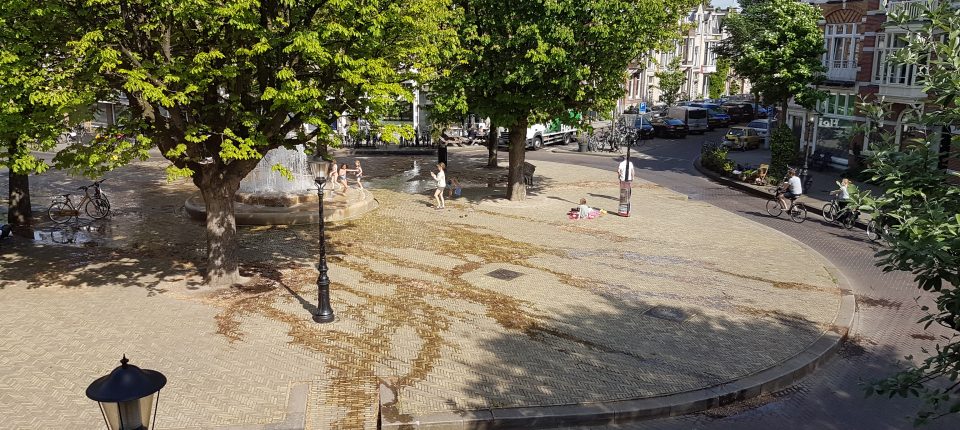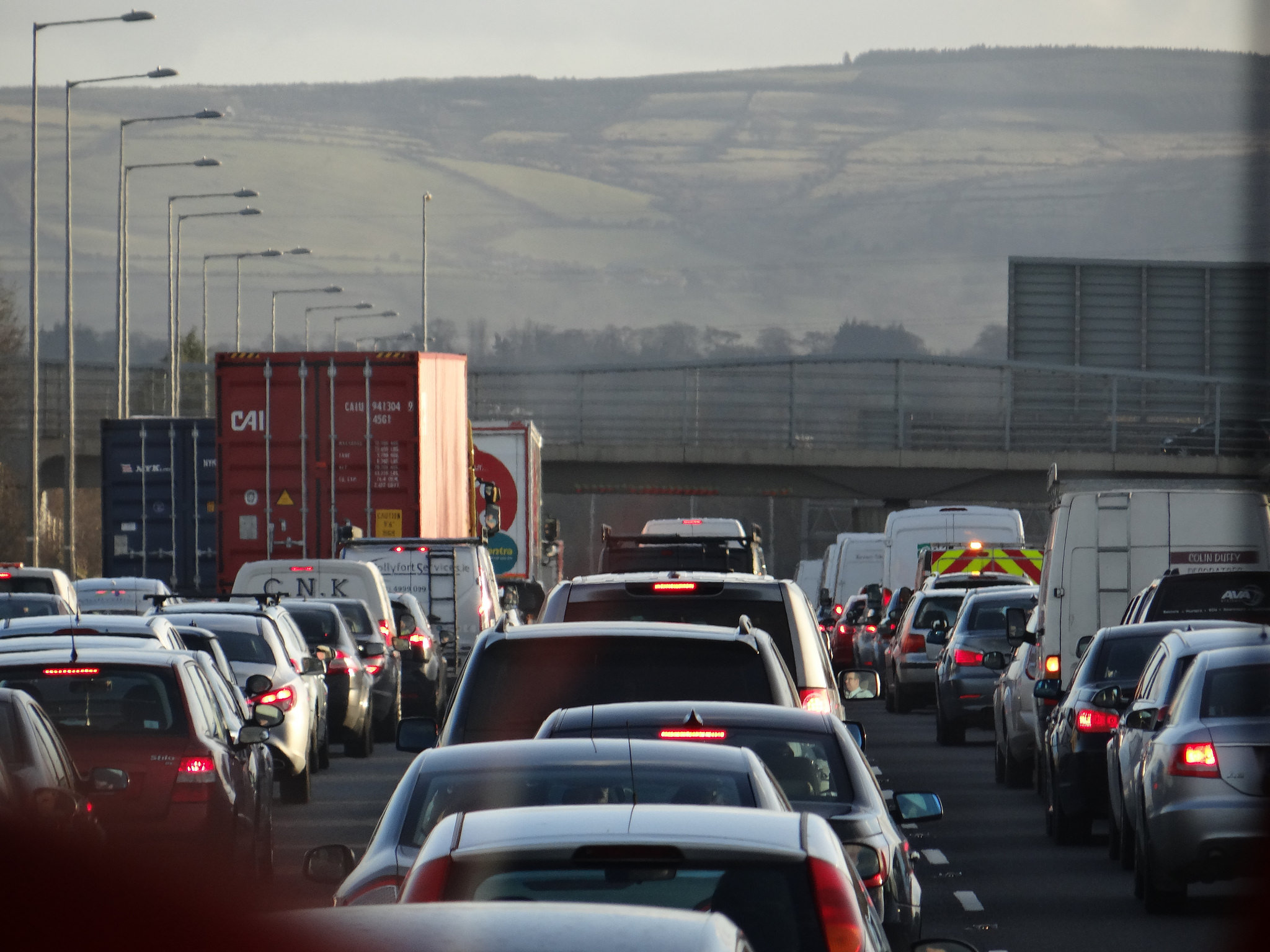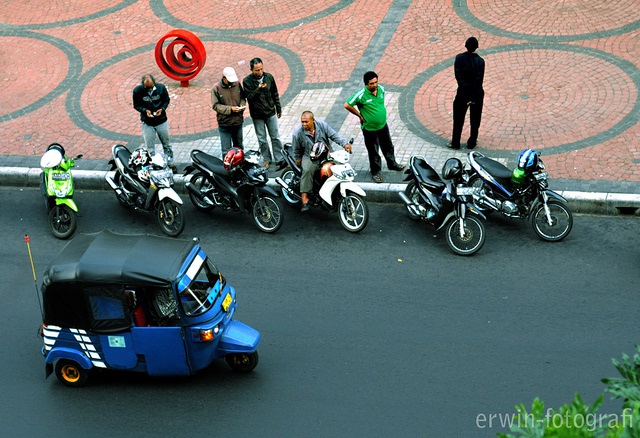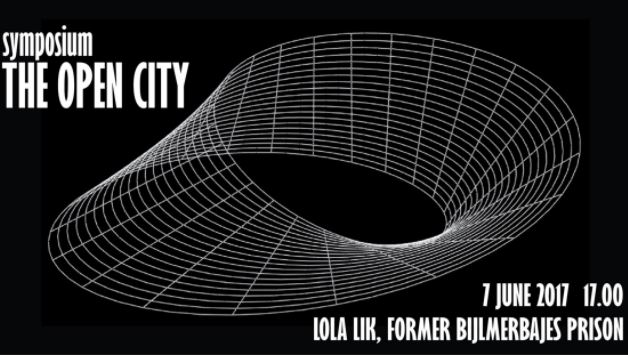How do you move around in cities?
Do you walk, bike, take public transportation, or drive? Are you a conscious user of streets? Here are two thoughts about who uses city streets and who should own them.
Zebra crossings
Zebra crossings are a very essential part of urban mobility for pedestrians. It is supposed to provide safe space for crossing the road with its visual white-and-black indication. When a pedestrian is faced to a zebra crossing, other road users must wait for pedestrians to cross. This rule is not often enforced, and many pedestrians are seen to be waiting for cars. Unfortunately, the legal power does not always win the law of physics – not many people dare to step in front of a car and expect the legal system to protect them in case they get hit, at which point it may be too late. We can’t find heroes like Peatónito at every crossing. The word “crossing” means that pedestrians are crossing a road, but it suggests that pedestrians are temporarily borrowing the space made for cars and/or bicycles. Here comes a question. Is it actually the case that roads are made for cars? Highways are probably made for cars, but are city streets as well?
Often, a zebra crossing requires you to go down from the sidewalk to the level of the road, and there may even be a few centimetres gap because of the kerbstone. So, if you are on a wheelchair, you have to go in the gap and then climb up back to the level of the sidewalk. You, as a pedestrian, are the one who has to make an effort. When it comes to this, some Dutch streets are better-designed than those in many other countries. Rather than making pedestrians work more, these streets are designed to make cars go up to the level of the zebra crossing that is made even to the sidewalk. Perhaps the following improvement could be brought to these zebra crossings: Their white stripes, usually oriented perpendicular to the direction of pedestrians’ travel, could instead be oriented perpendicular to that of cars (and of other vehicles on the road). Do you prefer to have lines that are parallel or perpendicular to the direction of your travel? Lines that are perpendicular to the direction of travel seem to mean “stop”, like the case of a non-entry sign. If we just change the direction of stripes at zebra crossings, pedestrians might feel more encouraged to go while drivers would feel more obliged to stop.

Zebra crossing at the level of sidewalk. Picture by: author.
Local streets as playground
Streets are not only used for transportation, but can be part of facilities for non-transportation purposes. The sidewalks are a part of street design, but some may not even consider them as part of a street. In some cases, a sidewalk mainly functions as a safe passage for pedestrians, away from bikes and cars. In other cases, sidewalk is almost (perhaps legally as well to a certain extent) part of the building next to it. Restaurants and cafes provide opportunities for dining outside. Residents leave a bench outside their door so people can take a rest. Bike parking facilities are often on the sidewalk. People put plants in front of their house. No matter what mode of transportation you use, it is almost impossible to avoid using a sidewalk. In the end of the day, you probably walk on the sidewalk before going home.

We play here. Picture by author.
Sidewalks are often used by children as a playground. You have perhaps seen drawings made by children on the sidewalk, whether they are done for the sake of simply drawing or creating a real-life scale game board. Some of them manage to play football even on a narrow sidewalk. I live in a family neighbourhood, and seeing balls rolling everywhere is a daily experience. A boy that I babysit is getting better and better with football and the ball goes out of the front yard very often. Pedestrians get surprised, bikes swerve and cars stop to avoid the ball. In any case I have not seen people yelling at the kids or getting angry, but I often wonder that in many parts of the world, this might not be the case. Should children be able to create their playground and trust that other road users will accommodate their wish? The Living street movement, which has become more and more common in many cities, could be an answer to this question.
Next time you use a street (which is probably happening very soon), take a look around you and see who is using it, for what purposes, and how different street users interact with each other. Any critical thoughts? Then you have become a city creator.





